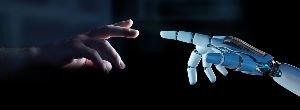Multicultural Education Approaches: Embracing Diversity Through Personalized Learning
August 25, 2025Categories: Education Learning, Podcast Episode

AI Personalized Learning: A New Era in Education with Brooklyn Sinclair
Discover how AI is revolutionizing education by transforming traditional learning environments into personalized learning experiences. Join us as we explore the impact of personal learning environments and AI personalized learning on students and educators alike. Learn about innovative tools and strategies that are shaping the future of personalized education and empowering learners to achieve their full potential. This podcast is your guide to understanding the new age of AI in education and how it can benefit you.
Why Multicultural Education Matters More Than Ever
Hey, have you ever thought about what it really means when schools talk about multicultural education? It’s not just about celebrating different cultures on a single day or hanging up some flags in the classroom. It’s way bigger and way more impactful than that. Multicultural education is about creating an environment where every student feels seen, heard, and valued—not because they fit a mold, but because of their unique background, identity, and experiences.
Imagine walking into a classroom where the materials reflect not just one culture but a vibrant mix of stories, perspectives, and histories. That’s what a good multicultural education approach aims for. It helps students understand the world beyond their own experiences, promotes empathy, and builds the skills we all need in a diverse society.
What Does Multicultural Education Look Like?
At the heart of it, multicultural education is about inclusion and respect. When educators bring in books, discussions, and examples from various cultures, they create a rich tapestry of learning. But more than just content, it’s also a mindset and a strategy. Here are a few key components:
- Curriculum Integration: Instead of segregating cultural topics, multicultural education weaves them through everyday lessons. Whether it’s math, history, or literature, the goal is to reflect multiple viewpoints.
- Culturally Responsive Teaching: Teachers actively learn about their students' cultural backgrounds to tailor their teaching methods, making content relatable and accessible.
- Critical Thinking About Bias: Students are encouraged to question and analyze stereotypes, prejudice, and dominant narratives—that helps break down harmful assumptions.
- Promoting Equity: Policies and practices in schools shift to recognize and address systemic inequalities, aiming to level the playing field for all learners.
Why Is This So Important Today?
Our classrooms are more diverse than ever, with students from different racial, ethnic, religious, and linguistic backgrounds. By fostering multicultural education, schools prepare kids not just academically but socially and emotionally for the real world. It cultivates respect and understanding, which are crucial in reducing conflicts and misunderstandings.
Remember, teaching sensitivity and appreciation for diversity isn’t about making one culture superior or inferior—it’s about valuing each student’s identity equally. When kids see their culture reflected positively at school, it boosts their confidence and motivation.
How Does Personal Learning Environment Tie In?
You might wonder where personal learning environment and personalized education fit into all this. Well, they’re actually very connected. A personal learning environment—basically the tools, resources, and social contexts that surround a student—can be adapted to support multicultural learning. When we combine this with ideas from AI personalized learning, educators can tailor lessons that not only fit learning styles but also cultural backgrounds.
For example, AI in education can recommend culturally relevant reading materials or provide translations to help English Language Learners feel included. So, personalized education isn’t just about academic skills—it's about embracing identity too.
Practical Examples You Can Spot
Some schools have started to implement multicultural education by:
- Bringing in guest speakers from diverse communities.
- Celebrating cultural festivals throughout the year instead of just once.
- Encouraging students to share their stories as part of the curriculum.
- Supporting bilingual or dual-language programs.
And the benefits are real—kids grow more confident, critical in their thinking, and open to new experiences.
Where to Go If You Want to Explore Personalized Learning More
If you’re curious about the intersection of personalized education and technology, Pooks.ai is a fantastic resource. It lets you create your own personalized book for free—tailored completely to your interests and learning goals. It’s a neat way to see personalized learning in action, especially if you want a tool that recognizes how unique your personal learning environment is.
Create your personalized book now – for free! Explore your identity, cultural interests, or any topic you love, and see what learning can feel like when it’s all about you.
Wrapping It Up
Honestly, multicultural education isn’t just an “extra” or a “nice-to-have” in today’s world—it’s fundamental. It shapes how we understand each other and ourselves, building more compassionate communities and smarter problem-solvers for tomorrow. Plus, with modern tools and approaches that focus on personalized education and even AI in education, it’s easier than ever to make learning culturally relevant for everyone.
Next time you see a classroom celebrating diversity, remember there’s a lot of thoughtful work behind that lesson—and it’s helping build a better future, one student at a time.
 |
Transform Your Reading Experience with Pooks.ai!
|
Post Tags: